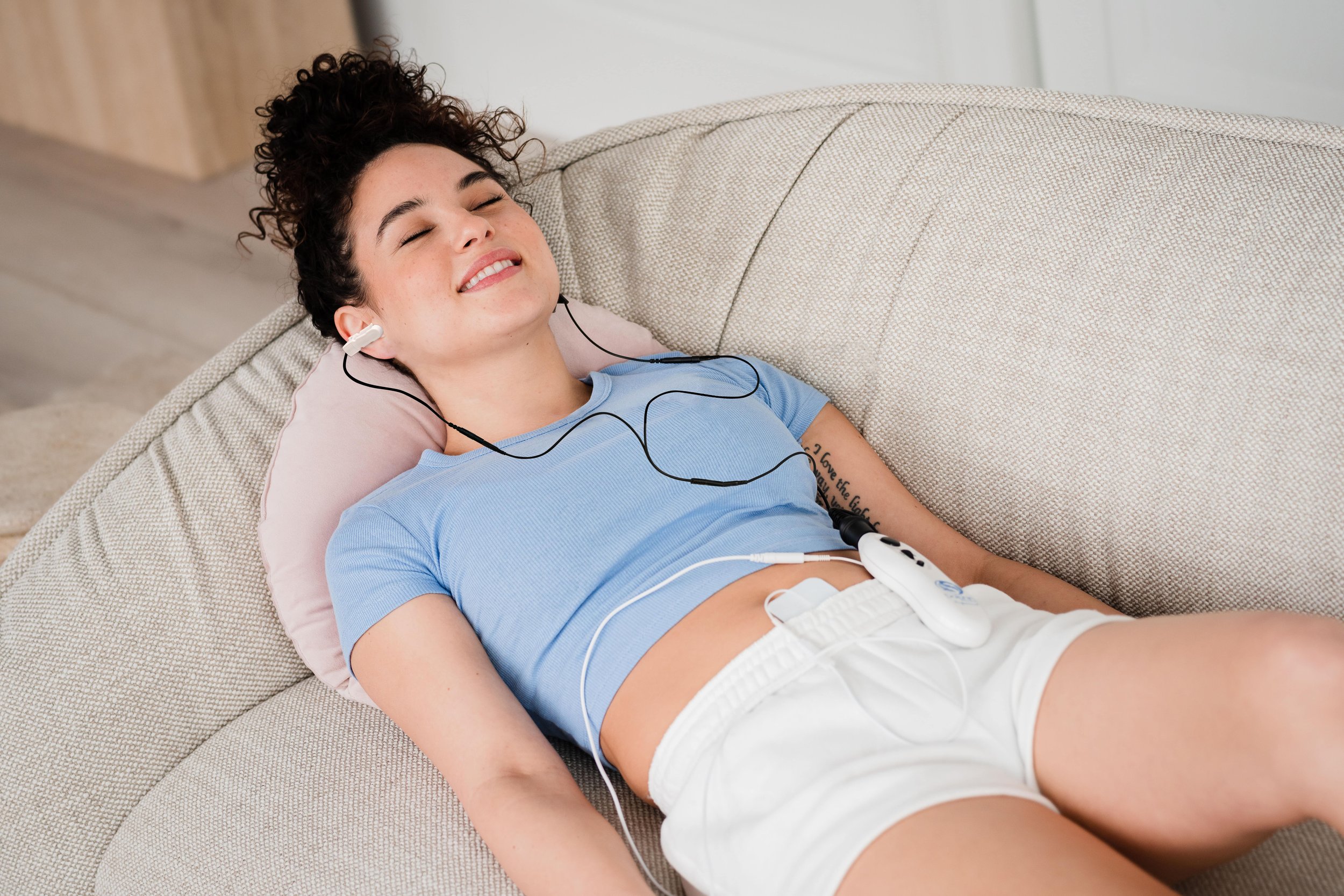
Vagus Nerve Stimulation (VNS) in Chelsea
What does Vagus Nerve Stimulation do?
The Parasympathetic Nervous System (PNS) comprises the nerves and ganglia located outside the brain and spinal cord. As a component of the involuntary nervous system, the PNS plays a crucial role in regulating bodily functions by slowing the heart rate, enhancing intestinal and glandular activity, and relaxing sphincter muscles. Together with the sympathetic nervous system, the PNS forms the autonomic nervous system.
The PNS enables the body to operate in a "rest and digest" mode. When the parasympathetic system is predominant, there is an increase in salivation and digestive processes, while heart rate and other sympathetic responses diminish. This aspect of our autonomic nervous system serves as the body's restorative mechanism, effectively acting as a brake to promote healing and relaxation.
Vagal tone, specifically high-frequency (HF) vagal tone, serves as a key indicator of parasympathetic vagal nerve activity and overall vagal health. HF reflects the functioning of the vagus nerve, the tenth cranial nerve, which plays a crucial role in the parasympathetic branch of the autonomic nervous system. This nerve is responsible for initiating approximately 80% of the body's relaxation response.
In contrast, when the sympathetic nervous system enters a heightened state of alertness—triggering the fight, flight, or freeze response—it activates the hypothalamic-pituitary-adrenal (HPA) axis, leading to the release of stress hormones such as cortisol and adrenaline. The vagus nerve acts as a counterbalance, effectively signaling the body to "calm down." Individuals with a robust vagal tone are better equipped to rest, recover, and rejuvenate more efficiently.
Often referred to as the "wandering nerve," the vagus nerve is the longest nerve in the body, extending through the front and innervating vital organs essential for maintaining health. It plays a pivotal role in regulating approximately 80% of our parasympathetic responses, acting as the "brakes" of the autonomic nervous system and helping to normalize an overactive HPA axis.
Decreased vagal activity or tone is associated with increased stress vulnerability and other measures of poor health.
Why should I try Vagus Nerve Stimulation?
Dolphin Vagus Nerve Stimulation (VNS) is a safe clinical procedure and can be an effective treatment for stress reduction & vagal tone enhancement. There are many health benefits of enhanced vagal tone! VNS (Vagal Nerve Stimulation)
The Dolphin Vagal Nerve Stimulator produces minute microcurrent impulses that gently relax stress to activate the Vagus Nerve.
Ten (10) minutes of vagal stim relaxes the same as eight (8) one-hour massages. (JCAM 2016)
Decreased Inflammation: The vagus nerve transmits anti-inflammatory signals throughout the body, promoting overall health.
Reduced Muscle Tension: Activating vagal tone can alleviate muscle tension and tenderness associated with trigger points.
Improved Circulation and Lymphatic Flow: The vagus nerve communicates information from the gut to the brain, playing a crucial role
in managing stress, anxiety, and fear—often referred to as "gut feeling." This communication aids in recovery from stressful situations.
Pain Reduction: Lowering stress levels directly correlates with a reduction in pain, highlighting the importance of
managing stress for overall well-being.
Immune Support: VNS protocols allow for Covid and Long-Covid symptom relief.
Clinical Applications of VNS
Non-Invasive Vagus Nerve Simulation
The concept of passive or active electrically stimulating the auricular branch of the vagus nerve (ABVN) is now gaining recognition in literature. (Barone L et al; 2007, De Couck M et al; 2012). Called - non-invasive vagus nerve stimulation (VNS) - VNS has been reported to improve HRV (Constantinescu V et al., 2019, Levin C et al.) , activate the parasympathetic system, (Clancy JA et al., 2014) to reduce inflammation (Kaniusas et al., 2019), respiratory dysfunction (Tracey, 2007), and the reduction of pro-inflammatory cytokines (Tracey, 2007; Stavrakis et al., 2015),
Dolphin Vagus Nerve Stimulation activates Vagal Tone
Dolphin Vagal Nerve Stimulation has been proven in science to activate the parasympathetic system (Armstrong 2019), which reduces lung inflammation (Kaniusas 2019), and pro-inflammatory cytokines to improve respiratory dysfunction (Tracey, 2007).


